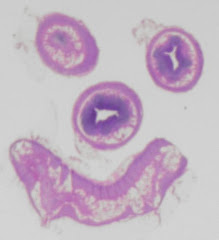I finished reading this book last week and I am disappointed that although there is a reference to a 'technical' assistant, the author is apparently unacquainted with the profession of Pathologists' Assistant. The author is a journalist from the UK. I'm left to wonder whether or not PAs are even a 'thing' there (I confess that I assumed that PAs would be distributed everywhere across the developed world - exposing my naivete I suppose. She also apparently did not interview an anatomical pathologist or a forensic pathologist to get an understanding of what the overall purpose of an autopsy might be. I plan to attempt to contact the author so that, in the event of a 2nd edition or a reprint, a mention of the totally wonderful work that PAs provide in North America is mentioned. Not only do we provide energetic, high quality work in surgical pathology and autopsy pathology day to day; doing the hands-on stuff that pathologists prefer to not involve themselves with, but we also teach pathology resident doctors in not just the nuts and bolts of how to handle certain surgical or autopsy specimens, but also in medicine and pathology. I also want to take the time to clarify a few things with the author regarding forensic versus hospital (aka 'medical') autopsies; how they [significantly] differ and who is, or may be, involved. The roll of the Autopsy Attendant (aka "Autopsy Assistant" or "Morgue Attendant" - also sometimes, and unfortunately, referred to as "Pathology Assistant") also should be clarified for the sake of the accuracy of the book.
By way of an overall review of the book however, I'd say that I very much enjoyed the results of the in-depth research that the author did, far and wide, in casting a light on the occupations of those who work largely behind the scenes when it comes to the handling of the dead. A good read; entertaining. Recommended.


